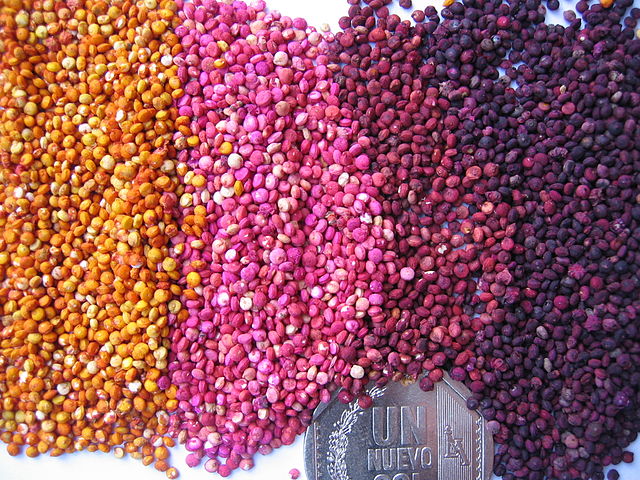Top Qs
Timeline
Chat
Perspective
Pseudocereal
Small, hard, dry seeds used as food From Wikipedia, the free encyclopedia
Remove ads
A pseudocereal or pseudograin is one of any non-grasses that are used in much the same way as cereals (true cereals are grasses). Pseudocereals can be further distinguished from other non-cereal staple crops (such as potatoes) by their being processed like a cereal: their seed can be ground into flour and otherwise used as a cereal. Prominent examples of pseudocereals include amaranth (love-lies-bleeding, red amaranth, Prince-of-Wales-feather), quinoa, and buckwheat.[1] The pseudocereals have a good nutritional profile, with high levels of essential amino acids, essential fatty acids, minerals, and some vitamins. The starch in pseudocereals has small granules and low amylose content (except for buckwheat), which gives it similar properties to waxy-type cereal starches.[2] The functional properties of pseudocereals, such as high viscosity, water-binding capacity, swelling capability, and freeze-thaw stability, are determined by their starch properties and seed morphology. Pseudocereals are gluten-free, and they are used to make 100% gluten-free products, which has increased their popularity. [2]
This article needs additional citations for verification. (August 2010) |


Remove ads
Common pseudocereals
Amaranthaceae (amaranth family)
- Amaranth (love-lies-bleeding, red amaranth, Prince-of-Wales-feather)
- Cañahua
- Cockscomb (also called quail grass or soko)
- Djulis
- Goosefoot
- Pitseed goosefoot
- Hanza
- Orache
- Quinoa
Fabaceae (pea and bean family)
- Wattleseed (also called acacia seed; many species, most notably sandplain wattle and elegant wattle)
Fagales (beech family)
Lamiaceae (mint and sage family)
Moraceae (fig and mulberry family)
Polygonaceae (buckwheat family)
Remove ads
Production
This table shows the annual production of some pseudocereals in 1961,[3] 2010, 2011, 2012, and 2013 ranked by 2013 production.[4]
Other grains that are locally important, but are not included in FAO statistics, include:
- Amaranth, an ancient pseudocereal, formerly a staple crop of the Aztec Empire, widely grown in Africa.
- Kañiwa or Cañahua, close relative of quinoa.
Remove ads
References
Wikiwand - on
Seamless Wikipedia browsing. On steroids.
Remove ads
